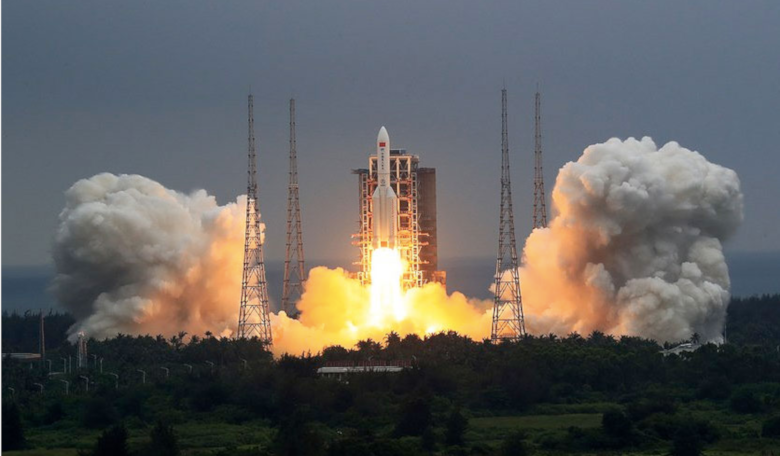Sixty years after Yuri Gagarin undertook mankind's first space journey, China launched the core capsule of its space station on Thursday morning, formally marking the country's ambitious plan to establish a permanent human presence in space.
As the countdown ticked down to zero at 11:23 am (local time) at the Wenchang Space Launch Center in Hainan province, 10 engines at the bottom of a Long March 5B heavy-lift carrier rocket roared to life, generating a thrust power of 1,068 metric tons to lift the 18-story-tall vehicle through thick rain clouds covering the coastal city of Wenchang.
Officials including the country's president Xi Jinping, extended warm congratulations to all members who participated in the mission in a congratulatory messages shortly after liftoff.
Xi said in the message the successful launch of the core module marks that China's space station construction has entered the full implementation stage, which lays a solid foundation for the follow-up tasks.
Live footage from state broadcaster CCTV showed space programme employees cheering as the rocket powered its way through the atmosphere billowing flames from the launch site.
Crowds wearing sunhats and wielding smartphone cameras gathered under the coconut trees of a nearby beach to watch the launch as a band played in photos published by the China Aerospace Science and Technology Corporation.
"A palace in the sky will no longer be just a romantic fantasy of the ancients," the CCTV anchor said.
Thursday's launch marked the second flight of the Long March 5B, China's most powerful rocket which is capable of sending a 25 ton payload to orbits near Earth.
The Chinese space station named Tiangong – meaning "Heavenly Palace" – will need around another 10 missions to loft the remaining parts into orbit where they will be assembled.
"We will learn how to assemble, operate and maintain large spacecraft in orbit," said Bai Linhou, deputy chief designer of the space station at the China Academy of Space Technology. "We aim to build Tiangong into a state-level space lab supporting the long stay of astronauts and large-scale scientific, technological and application experiments."
Once completed, it is expected to remain in low Earth orbit at between 400 and 450 kilometres above our planet for 15 years. For comparison, the International Space Station orbits around 400 kilometres above Earth's surface on average.











